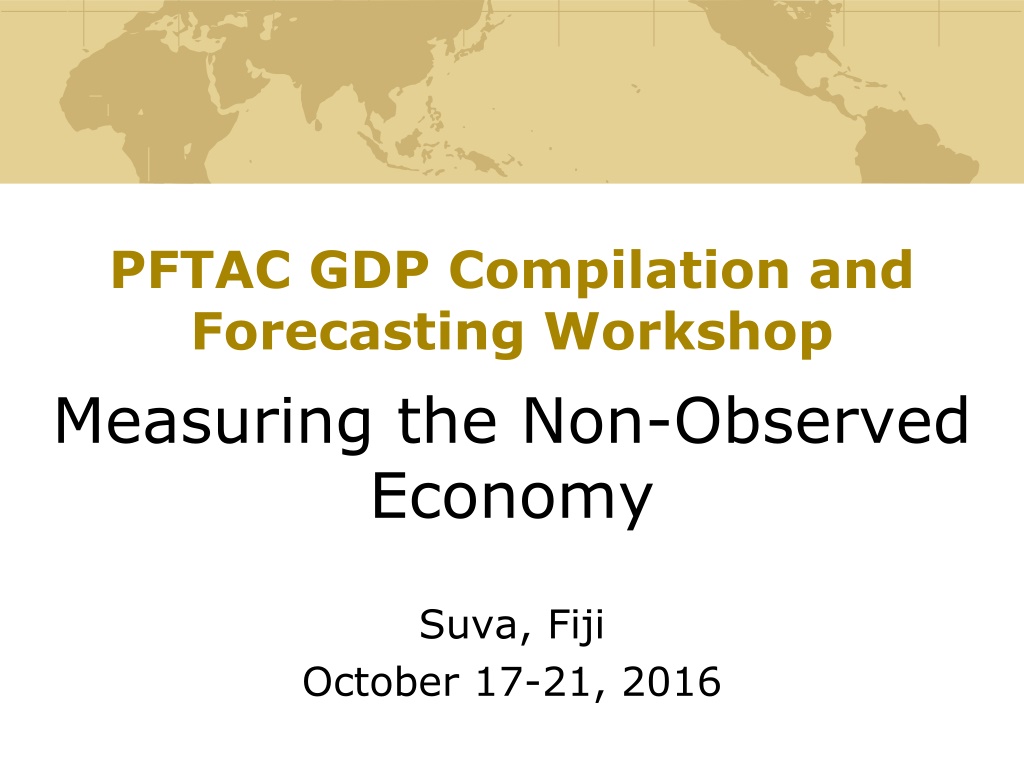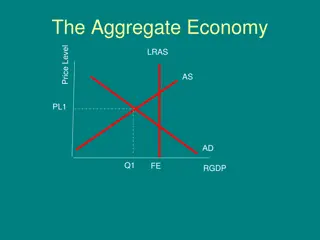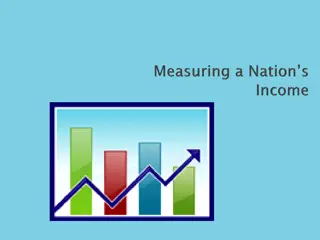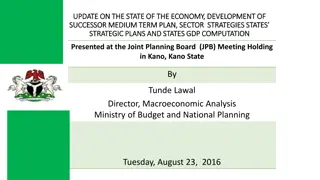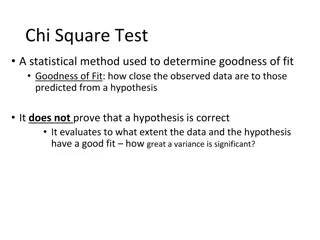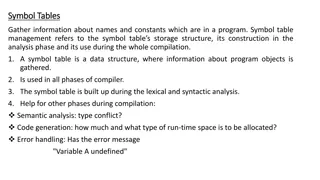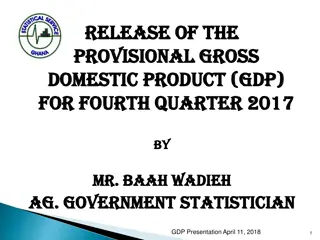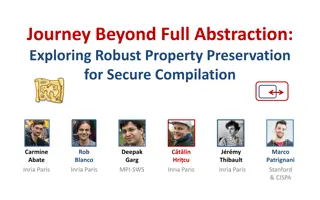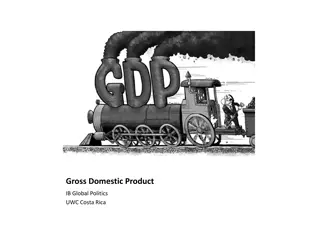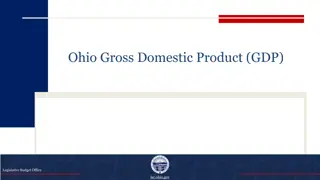The Non-Observed Economy in GDP Compilation
The non-observed economy, including informal and illegal activities, poses challenges in GDP compilation, affecting growth rates and international comparability. Comprehensive coverage and terminology are vital to address these issues. The size of the informal economy in the Pacific region and globally highlights its significance in economic analysis.
Uploaded on Oct 03, 2024 | 1 Views
Download Presentation

Please find below an Image/Link to download the presentation.
The content on the website is provided AS IS for your information and personal use only. It may not be sold, licensed, or shared on other websites without obtaining consent from the author.If you encounter any issues during the download, it is possible that the publisher has removed the file from their server.
You are allowed to download the files provided on this website for personal or commercial use, subject to the condition that they are used lawfully. All files are the property of their respective owners.
The content on the website is provided AS IS for your information and personal use only. It may not be sold, licensed, or shared on other websites without obtaining consent from the author.
E N D
Presentation Transcript
PFTAC GDP Compilation and Forecasting Workshop Measuring the Non-Observed Economy Suva, Fiji October 17-21, 2016
Outline Scope and terminology Production boundaries Compilation issues Non observed economy in the PICs 2
Terminology: Non observed economy Not captured in regular statistical enquiries Informal (unincorporated enterprises, low level of organization, with little/no division between labor and capital as factors of production and on a small scale subsistence) Concealment of legal activity (tax avoidance) Illegal activity (forbidden by law or unauthorized)
SNA and unrecorded economy The SNA production boundary Production of all goods whether produced for the market or for own-use Production of services if Sold on the market Supplied to units other than producers Produced by paid labor Production of housing services by owner-occupier
Implications of incomplete coverage of GDP Biased growth rates Misleading information on structure of economy Misleading information on the level of GDP Biased international comparability Distortions in the internal consistency of the national accounts
References: Non observed economy See Measuring the Non-Observed Economy A Handbook, OECD 2008 SNA, chapter 25 UN Handbook on NOE
Comprehensive coverage Covering all economic activities that fall within the production boundary Whether market or non-market For sale or own use Legal or illegal Hidden or not Formal or informal sector Recorded or unrecorded economic activities
Size of informal economy $9 trillion in 1999 (The Economist) Kiribati (including monetary unrecorded and non monetary-subsistence fishing and agriculture plus owner occupiers): 35% Solomon Islands: 28% for 2012 OECD: 16% on average in 2005 Significant for agriculture, fishing, construction in the PICS
Separate measurement: Difficulty Difficult to identify and separately estimate hidden, illegal, and informal activities due to: Overlaps between them Borderline issues Unclear definition and scope Lack of data There is a need to be consistent in Measurement and Whether these activities are within the production boundary
Recorded vs. unrecorded economic activities Recorded- covered in statistical collections Most of the corporate (or formal) sector included in the regular data collections Unrecorded- not covered in statistical collections Units within the survey scope But excluded outdated frames But excluded non-registration Part of HH unincorporated enterprises (informal sector activity) Covered, but misreport Part of unincorporated ent. Not in survey scope Part of corporate (formal) units not in survey scope Part of illegal misreport Most part of illegal economy
Strategy for measuring the unrecorded economy Be clear on what is to be measured Assess the existing national accounts compilation Evaluate existing statistical sources Analyze the unrecorded economy Increase the efficiency of existing data collections Develop measurement procedures using available source data, supplemented with ad-hoc collections indirect techniques and adjustments Develop new data sources
Inadequacy of data sources Incorporating unrecorded activities in GDP involves extensive use of available statistics to obtain INDIRECT INDICATORS Shortcomings in available data Overlap in coverage Coverage is often partial Classification in various sources may differ Indicators are usually a by-product of regulatory needs Partial information No clear distinction between incorporated and unincorporated enterprises Available irregularly
Under-reporting or mis-reporting Fiscal audits (personal and corporate income tax systems and the VAT system) Confrontation of detailed data and detailed ratios of income and expenses for similar type of establishments from business surveys Demand side data to verify and correct production estimates Specific study of under-reporting or mis-reporting Expert knowledge Suitable methods vary for different kinds of under-reporting and for different activities
Illegal activities Direct observation is obviously out of the question Indirect sources have to be used Administrative and law enforcement records Data on key inputs Data on major uses Special research/studies Part of illegal production may have been included implicitly Enterprises over-reporting legal activities to legalize income from illegal activities
Household production: Two problems in surveys Problems in identifying production units, developing sample frames, and managing data collection: Often a large number of small scale units Some activities are widespread and some are concentrated in certain areas Often invisible may take place within the premises of a household Often not registered Open and close quickly, frequently Part-time, seasonal and move from industry to industry Often not regulated and supported by government Mobile - no fixed working premises
Household production: Two problems in surveys Measurement problems: Often no formal bookkeeping is kept Production for own use - appropriate market prices might not be available Use of own material, labor and capital - difficult to calculate cost of production Expenditure for production is often indistinguishable from Household consumption expenditure Many capital goods may be used indistinguishably for business and Household consumption purposes Seasonal character of many activities
Production: Labor input-based method Uses data on labor force obtained from: Business surveys and administrative sources Household labor force surveys Both sources should provide comparable data, or should provide information to convert to a standard labor unit Hours worked, or Full time equivalent
Production: Labor input- based method Allows determination of the labor participation not covered in business surveys The assumption is that the regular household surveys give comprehensive estimates of labor participation benchmarked to census data
Production: Labor input- based method Determination of output/value added per labor unit Analyze the characteristics of units excluded from the business surveys Derive output/value added per labor unit on the basis of ad-hoc studies If not feasible, use information that is closely related to unrecorded activities Determine ratios at a detailed level
Household Income Expenditure Survey Compilation methods Direct observation methods Enables periodic benchmarking Confrontation of income and expenditure data Standardized SPC questionnaires 12 months and diary Discussion issues?
Non observed economy in the PICs Subsistence covered in most (all?) PICs HIES extrapolated using various indicators FAO agriculture censuses (Vanuatu) Adjustments for illegal activities or under/mis-reporting: started in Fiji, Solomon Islands Commodity flow approach can help identifying inconsistencies
